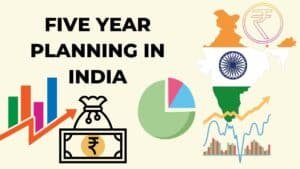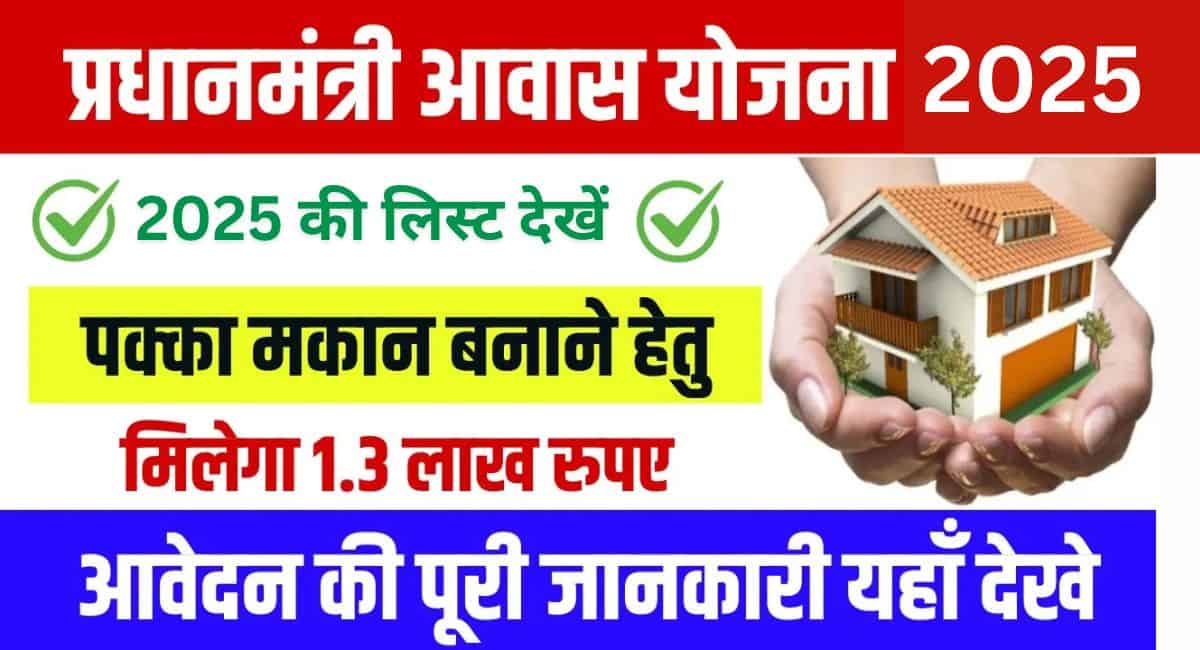objectives of five year planning in india
The aims and objectives of Indian plans are determined by the Directive Principles of State Policy enshrined in the Constitution. According to these, the public and private sectors are seen as complementary to each other. After independence, a mixed planning system was chosen for economic development, in which economic planning was given a prominent place. In the first eight five-year plans, the emphasis was on expanding the scope of the public sector. Under this a large amount of investment was made in basic and heavy industries. However, from the beginning of the Ninth Five Year Plan (1997), it adopted a prescriptive nature with less emphasis on the public sector.
Objectives of Indian Economic Planning
- promoting economic development;
- establishment of social justice;
- attainment of full employment;
- poverty alleviation and creation of employment opportunities;
- attainment of self-sufficiency;
- investment and capital formation;
- equality in income distribution and reduction of regional disparities; And
- Inclusive growth and sustainable development.

First Five Year Plan (1951-56)
In the year 1951, in view of large scale food shortage, influx of refugees and inflationary pressure in the economy, the First Five Year Plan (1951-56) gave priority to irrigation, electricity, agriculture, price-stabilization as well as resettlement of refugees. Went.
→ The plan had the following objectives:-- Highest priority to the development of agriculture sector.
- To remove the imbalance arising out of the partition and war of the country.
- Attainment of self-sufficiency in food grains in minimum time.
- To prepare the desired background for revival and industrialization of small and cottage industries.
- The first five year plan was based on the Harrod-Domar model.
- The Community Development Program and the National Extension Service are also the product of the First Five Year Plan.
- The actual growth was 3.6% as against the targeted growth of 2.1% in the First Five Year Plan.
- The plan was successful because of good production in the last two years of the plan.
Second Five Year Plan (1956–61)
- In the second five-year plan, an attempt was made to promote such a system of development, so that a socialist system could be established.
- This scheme P.C. It was based on the four regional model developed by Mahalanobis.
- In this plan, rapid industrialization of the country with special emphasis on the development of basic and heavy industries was considered as the main goal.
The plan had the following objectives-
- To increase the national income by 25%.
- Rapid industrialization with special emphasis on basic and heavy industries.
- Large scale expansion in employment opportunities.
- Reduction in inequality of income and wealth and more equal distribution of economic power.
- The targeted growth rate in the Second Plan was 4.5%, but the actual growth rate was 4.3%.
- In this plan, Rourkela (Odisha), Bhilai (Chhattisgarh) and Durgapur (West Bengal) steel plants were established.
- This plan was also generally successful.
Third Five Year Plan (1961–66)
The Third Five Year Plan started with the aim of making the Indian economy self-reliant and self-sustaining. Although there is no clear mention of any model in this plan, yet this plan is based on the four regional models of Mahalanobis and J. The influence of the planning model of Sandy and Sukhmoy Chakraborty can be seen.In this plan maximum emphasis was given on agriculture.
The plan had the following objectives-
- To increase the national income by more than 5% per annum.
- Attaining self-sufficiency in food grains and increasing agricultural production to meet the needs of industries and exports.
- Expansion of basic industries such as steel, chemical, fuel and electricity sector and establishment of machine manufacturing capacity so that the country can meet the needs of industrialization within 10 years from its own resources.
- Increase in equality of opportunity and equitable distribution of economic development.
- To make full use of the country’s human power and increase in employment opportunities.
- Against the targeted growth rate of 5.6% in this five-year plan, only 2.8% growth rate was achieved, which can be said to be extremely disappointing.
- Undesirable events like the Indo-China war of 1962, the Indo-Pak war of 1965 and the drought of 1965-66 occurred during the Third Plan period, due to which the objectives of this plan could not be achieved.
annual plans
The Indo-Pak war in 1965, two consecutive years of severe drought, currency devaluation, rise in prices of general consumer goods and paucity of resources for planning delayed the finalization of the Fourth Five Year Plan. Between 1966 and 1969, three annual plans were made under the format of the fourth plan. This period is also called planning leave.Fourth Five Year Plan (1969-74)
- The objective of the Fourth Five Year Plan was to increase the pace of development by removing the uncertainty in agricultural production and foreign aid.
- The draft of this scheme was prepared by the Deputy Chairman of the Planning Commission, D.R. Gadgil prepared.
- This plan was developed by Ashok Rudra and Alan S. It was based on the Open Consistency Model (Liatif’s Input-Output Model) developed by Mane and took 30 regions.
- The Gadgil strategy is related to this plan.
- Nationalization of 14 banks (1969), MRTP Act, 1969 and concept of buffer stock were implemented in the fourth plan itself.
- Attainment of economic development and self-reliance with stability
- Increase in national income and employment opportunities. (iii) Equal distribution of income and wealth and reduction in regional disparity.
- Emphasis on balanced development.
- Rapid industrial development and special emphasis on basic and heavy industries.
- The plan sought to raise the standard of living through programs that promoted equality and social justice.
- In this plan, the target of growth rate was fixed at 5.7%, while the actual growth rate was only 3.3%.
- The implementation of the family planning program was one of the main goals of this plan.
Fifth Five Year Plan (1974–79)
- 66 sectors were taken up in the Fifth Five Year Plan framed in the backdrop of inflationary pressures.
- During the fifth plan, the Deputy Chairman of the Planning Commission, Prof. DT Lakdawala was
- The two main objectives of this plan were ‘removal of poverty’ and ‘attainment of self-reliance’.
- It gave high priority to controlling inflation and achieving economic stability.
- For the first time in this scheme, the slogan of removing poverty was given.
- The minimum requirement program, which includes primary education, drinking water, health services in rural areas, nutrition, houses for the landless, rural roads, rural electrification, etc., was started in this plan.
- In this plan, the policy of import substitution and export promotion and fair wage price policy were also adopted.
- The actual growth rate achieved under the Fifth Plan was 4.8% against the targeted growth rate of 4.4%.
- The Janata Party government declared this scheme prematurely terminated and implemented the Sixth Plan (1978-83) which was named as ‘Rolling Plan’.
- Gunnar Myrdal had formulated the continuous plan and D.T. Lakdawala has it.
Sixth Five Year Plan (1980–85)
- In the year 1977, the Janata Party government was formed at the center, it implemented the concept of decentralized planning. The Sixth Plan (1978-83) was implemented by the Janata Party government declaring the Fifth Plan as finished a year earlier.
- But soon the Janata Party government fell and the Congress party came back to power in the year 1980. He reorganized the Sixth Plan and implemented it from April 1, 1980 to March 31, 1985.
- Therefore, the period from 1st April, 1979 to 31st March, 1980 was considered as ‘Plan Vacation’.
- In the Sixth Plan, special emphasis was laid on poverty alleviation and employment generation. Although poverty alleviation was given priority in the fifth plan itself, but in the sixth plan many programs were launched for poverty alleviation.
- In this plan, employment generation was presented as an important part of poverty alleviation programmes. 9 programs related to eradication of rural unemployment IRDP, NREP, TRYSEM, DWACRA, RLEGP were implemented in the Sixth Plan itself.
- This scheme was also based on the input-output model. In this scheme, the Lakdawala Committee had prepared ‘Poverty Index’, under which non-availability of 2400 calories per day per person in rural areas and 2100 calories per day in urban areas was defined as poverty measure.
- The Sixth Plan was prepared keeping in mind the long term of 15 years, hence it is also called ‘Perspective Planning’.
- Poverty alleviation, economic development, modernisation, self-reliance and social justice were the main objectives of the scheme.
- Modernization of the economy was first adopted in the Sixth Plan itself.
- The targeted growth rate under this plan was 5.2%, while the actual growth rate was 5.7%.
Seventh Five Year Plan (1985–90)
- The plan was to emphasize liberalization with emphasis on long-term development strategies.
- The development strategy of the Seventh Plan was to attack directly on the problems of poverty, unemployment and regional disparity.
- The goal of this plan was to increase the production of food grains and employment opportunities, development under the basic concepts of modernization, self-reliance and social justice.
- Modernization
- Increase in production and productivity of food grains.
- Establishment of social system based on equality and justice.
- Transformation of the Indian economy into an independent and self-reliant economy.
- Ecology and environmental protection.
- Energy conservation and development of non-conventional energy sources.
- It was a successful scheme. In this, against the targeted growth rate of 5%, the actual growth rate was 6.0%.
annual plans
As a result of the immediate circumstances, the Eighth Five Year Plan could start from 1st April, 1992. Separate annual plans were prepared for the years 1990-91 and 1991-92. In these annual plans, prepared in view of the Eighth Five Year Plan, emphasis was mainly on employment generation and social change.
Eighth Five Year Plan (1992–97)
- The Eighth Five Year Plan carried out structural adjustments and long-term stabilization. Start immediately after starting the policies
- The plan ‘John W. Muller’ model.
- Human Resource Development.
- To create full employment by the end of the century.
- Control over population growth through schemes of public cooperation, incentives and discouragement
- Universalisation of primary education and eradication of illiteracy in the age group of 15-35 years
- Strengthening of infrastructure (energy, transport, communication, irrigation etc.).
- Universalisation of drinking water and primary health facilities.
- Agricultural development and diversification of agriculture to achieve self-sufficiency in food items and create surplus for export.
- The targeted growth rate of the plan was 5.6%, while the actual growth was 6.8%.
Ninth Five Year Plan (1997–2002)
- The Ninth Five Year Plan recognized the relationship between rapid economic growth and improvement in the quality of life.
- It emphasized seven basic minimum services, including primary education for all, housing for the homeless, nutritious food for children, roads for all villages and hamlets, and improving the public distribution system for the poor.
- The goal of this plan was also to implement the policy of fiscal consolidation, so that the revenue deficit of the center and the states could be reduced.
- Economic development with ‘social justice and equity’ was the main objective of the Ninth Five Year Plan.
- To give priority to agriculture and rural development for poverty alleviation and generation of adequate productive employment.
- Increase in the rate of economic growth keeping prices constant.
- Providing food and nutritional security to all people (especially the poor).
- Controlling the population growth rate.
- Environmental protection through social mobilization and people’s participation at every level in the process of development.
- To strengthen women and socially weaker and less advantaged sections.
- Institutions in which the participation of the population is high like- Panchayati Raj, strengthening cooperative institutions etc.
- To strengthen the effort of self-reliance. As against the targeted growth of 6.5% in this Five Year Plan
- The actual growth was only 5.4%.
Tenth Five Year Plan (2002–2007)
- The Tenth Five Year Plan, based on a more comprehensive input-output model, was implemented at a time when economic reforms were at its peak in the economy.
- This ambitious plan with a real growth of 7.6% was unique for several reasons. The diplomacy of the Tenth Plan was based on two basic elements-
- Keeping the achievements achieved in the past years intact, further development on these.
- To remove the obstacles in the development of various sectors of the economy on priority basis.
Expressing concern over the growing regional imbalances in the Tenth Five Year Plan, the goal of equal regional development was fixed and state-wise targets were also fixed to give necessary attention to it.
According to the Tenth Five Year Plan, although economic growth has the potential to reduce poverty, it is necessary that the strategy of development be designed in such a way that it is directly effective in establishing equity and social justice. That’s why a three-pronged strategy was adopted in the Tenth Plan-
- Agriculture was accepted as an important sector in the plan, because the development of agricultural sector has the most potential to spread the benefits widely.
- Speedy development of those sectors was ensured, which were going to create gainful employment opportunities.
- Emphasis on supplementary programs in respect of such target groups who could not benefit adequately from the normal growth process.
- Although the actual growth rate (7.6%) in the Tenth Five Year Plan was less than the target (8.0%), it was the highest growth ever.
Eleventh Five Year Plan (2007–2012)
- The main goal of the Eleventh Five Year Plan was to have inclusive development with rapid economic growth, so that everyone can be connected with the stream of development and the benefits of economic development can be distributed to all.
- A growth rate of 9% was targeted during this plan period, while the actual achievement was 8%.
- In this plan, 26 indicators were created to assess the performance of work related to poverty, health, education, development of women and children, infrastructure and environment.
- During the Eleventh Plan, a target was set to provide high quality employment.
Twelfth Five Year Plan (2012–2017)
- Titled Faster, More Inclusive and Sustainable Growth, the Twelfth Five Year Plan began at a time when the global economy was facing a second financial crisis, triggered by the euro zone debt crisis in the final year of the Eleventh Plan.
- This financial crisis affected all the countries including India. In this background, the biggest challenge before the policy-makers was that how to get the high growth rate of the economy again? In the Twelfth Plan, it has been emphasized that while re-accelerating the growth rate of the economy, it should also be ensured that the development process remains inclusive and sustainable.
major goal
Twenty-five key goals were set in the Twelfth Five Year Plan, which would have established faster, more inclusive and sustainable growth. These goals were as follows-
• Economic Development
- GDP growth at a real rate of 8%.
- Agriculture growth at the rate of 2. 4%.
- Manufacturing growth at 10%.
- Preferably higher average growth in the Twelfth Plan than in the Eleventh Plan by each State.
• Poverty and Employment
- Reduction in poverty by 10 percentage points, as compared to earlier estimates, by the end of the Twelfth Five Year Plan.
- Creation of 50 million new job opportunities in the non-agriculture sector and distribution of an equal number of skill certificates during the plan.
• education
- To increase the average number of years of schooling to seven years by the end of the 12th Five Year Plan.
- Higher education, in line with the skill requirements in the economy
- Creating two million additional seats for each age group in
- To close the gender and social gap in school enrollment by the end of the plan.
• health
- By the end of the plan, reducing the infant mortality rate to 25 per thousand and reducing the maternal mortality rate. Bringing it to the level of per thousand live births and improving the child sex ratio (0-6 years) to the level of 950.
- To bring down the total fertility rate to the level of 2.1 by the end of the plan.
- To reduce undernutrition among children of 0-3 years to half of NFHS-3 levels by the end of 12th Five Year Plan.
rural infrastructure
- To increase investment in infrastructure to 9% of GDP by the end of the plan.
- To increase the gross irrigated area from 90 million hectares to 103 million hectares by the end of the plan.
- To provide electricity to all the villages by the end of the scheme.
- Connecting all villages with all-weather roads by the end of the 12th Five Year Plan.
- Bringing down the national and state highways to minimum two-lane norms by the end of the plan.
- Completion of Eastern and Western Dedicated Freight Corridors by the end of the plan.
- To increase rural tele-density to the level of 70% by the end of 12th Plan.
- To supply clean drinking water to at least half of the rural population by the end of the plan.
Environment and Sustainability
- Increase in green cover by 1 million hectares per year during the plan period.
- Addition of 30,000 MW in renewable energy capacity.
- To reduce the emission intensity (from 2005 level) by 20 to 25% by the year 2020.
• Service Delivery
- To provide banking services to 90% of Indian households by the end of the plan.
- Providing major subsidies and welfare assistance in the form of direct cash transfers by the end of the Twelfth Plan.
in conclusion
The Twelfth Five Year Plan proposed a two-pronged strategy, focusing on the need to bring economic imbalances under control and overcome the recessionary phase, as well as structural reforms in a number of sectors, which in the medium term necessary to sustain growth.
five year plan in india conclusion
If we focus on the main goals of the Five Year Plans, the first four Five Year Plans focused on increasing production and achieving self-sufficiency. After this, from the fifth five-year plan, importance was given to the distribution of the benefits of economic development among the general public, so that the quality of life of the citizens could be increased.
In the 11th Five Year Plan, moving beyond distribution, inclusion was brought to the center of the policy, so that the citizens of the country could be made contributors of production and entitled to receive their share by taking them out of the role of beggars. Taking this sequence further, the 12th Five Year Plan adopted inclusion as well as sustainability, so that quality life can be provided to the present and future generations.
Recently, NITI Aayog has advocated a more comprehensive and multi-pronged planning strategy for India’s development. Under this, medium-term and short-term plans will be made to achieve its goals by formulating a strategy for long-term development.
There will be two benefits from this – one, the aspect of development will be clear in front of the policy makers and secondly, it can be made more efficient by amending the medium and short term plans/programs as per the requirement. In this context, NITI Aayog has also issued a three-year development agenda.
five year plans in india goals and achievements
- In the year 1944, the Gandhian plan was propounded by Shriman Narayan Agarwal.
- The concept of ‘rolling plan’ was introduced by the Janata government (in the year 1978) in national planning.
- The ‘rolling plan’ for backward countries was suggested by Gunnar Myrdal.
- The Growth Center Approach was adopted in the Fourth Five Year Plan with the objective of removing regional disparities.
- Food, work and productivity was the main slogan of the Seventh Five Year Plan.
- Nationalization of 14 banks in India was done for the first time in July, 1969.
- Twenty Point Economic Program was first started in the year 1975.
- Core sector in the scheme means the selected basic industry. The category of core sector includes 8 basic industries such as steel, cement, fertiliser, mineral oil, coal, natural gas, refinery products and electricity.
- The Green Revolution was started in India in the year 1966-67.
- The slogan Garibi Hatao was given by Indira Gandhi in the year 1971, which was included as the main goal of the Fifth Five Year Plan (1974–78).
- The resolution to establish a socialist structure of the society was taken under the Second Five Year Plan.
- The basis of the first five-year plan in India was the ‘Harrod-Domar Model’.
- First of all, the objective of self-sustaining development in India was adopted in the fourth five year plan.



